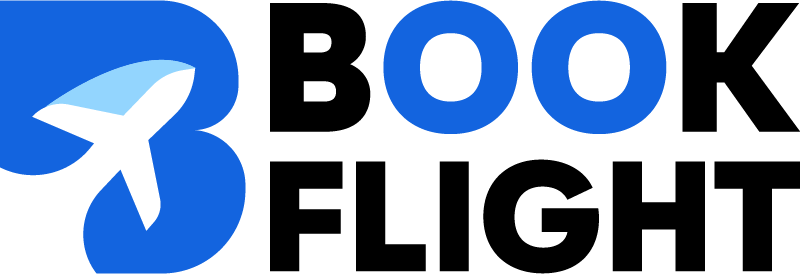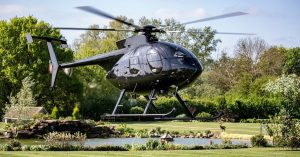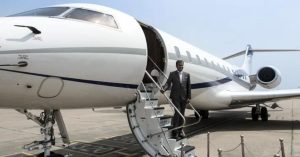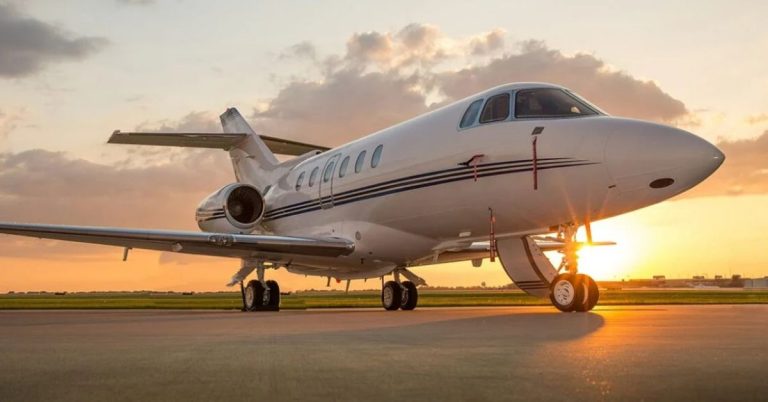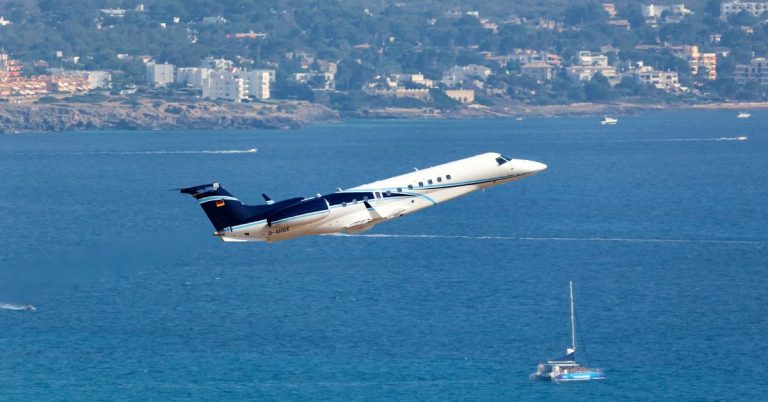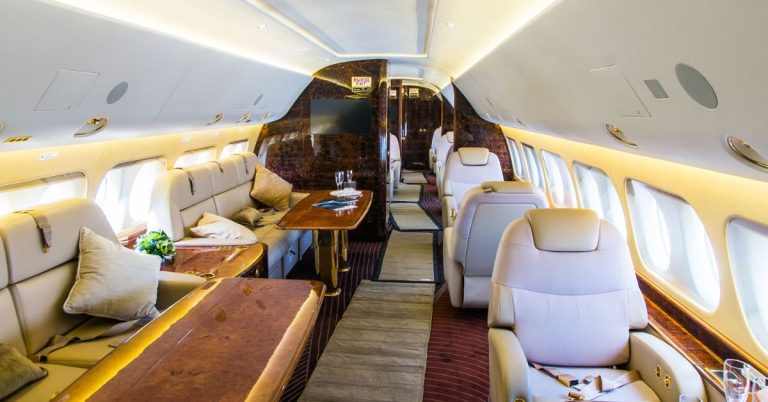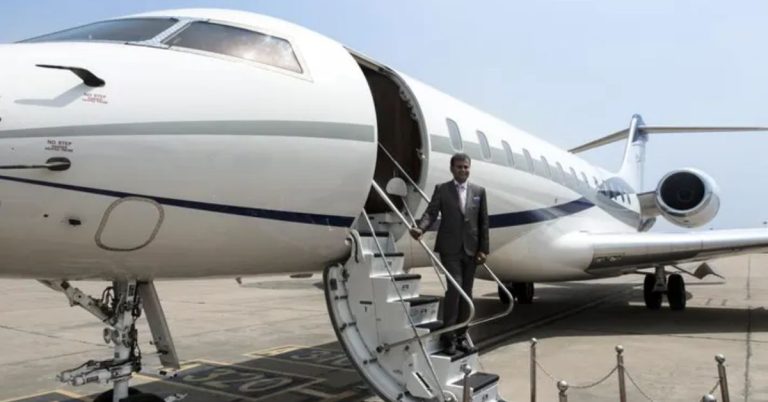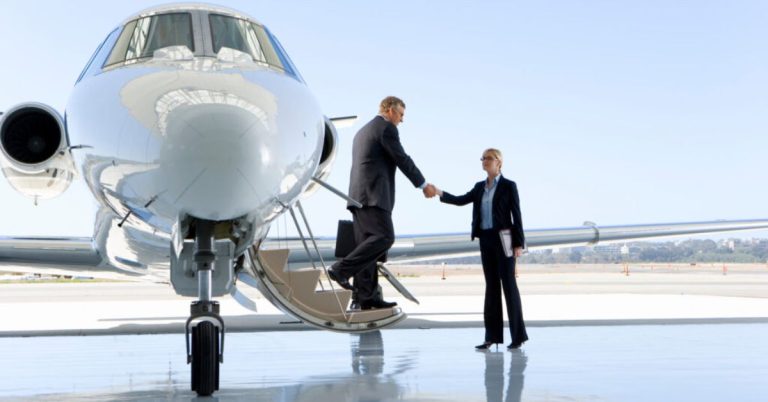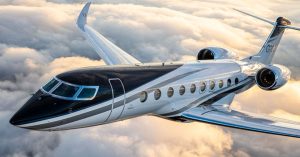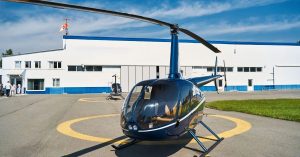In today’s globalized economy, time has become the most valuable commodity for high-net-worth individuals (HNWIs), corporate executives, and government officials. The rise in demand for private aviation reflects a broader shift toward efficiency, autonomy, and strategic mobility. Among this segment, the preference for long-haul, non-stop private flights has increased significantly over the last decade—driven by the need to connect continents without compromise on time, comfort, or security.
The private aviation sector has responded with technological advancements, producing ultra-long-range aircraft capable of connecting global business hubs such as New York to Dubai or Singapore to London without refueling. These aircraft are no longer confined to executive luxury; they are now positioned as strategic business assets, enabling uninterrupted transoceanic operations and real-time decision-making across time zones.
For individuals and organizations evaluating the return on investment in private aviation, one crucial question often arises: Can a private jet fly for 12 hours? This question is not merely technical—it intersects with operational planning, financial strategy, and emerging trends in aircraft design.
This article offers a comprehensive analysis of that question. It will assess the engineering capabilities of long-range jets, the economic implications of extended flight durations, and the evolving market dynamics that make 12-hour private flights not only feasible but increasingly in demand. We will also compare cost structures with commercial alternatives and examine future innovations shaping the next generation of global mobility.
Can a Private Jet Fly for 12 Hours?
Can a private jet fly for 12 hours? This is not only a question of engineering—it reflects a growing business imperative in the private aviation industry. As global executives, high-net-worth individuals (HNWIs), and state officials increasingly require intercontinental mobility, the ability to travel long distances without layovers or refueling has become a critical differentiator in aviation capability and luxury travel strategy.
The short answer is yes. Several modern ultra-long-range private jets are built specifically to sustain uninterrupted flights exceeding 12 hours. These aircraft can reach more than 7,000 nautical miles under optimal conditions, connecting international business hubs in a single nonstop leg. For users prioritizing efficiency, privacy, and control, the strategic value of flying 12 hours non-stop is considerable.
Aircraft Designed for 12+ Hour Flight Durations
Not all private jets can meet the 12-hour benchmark. Most light and mid-size jets have a range of 2,000–3,500 nautical miles and are unsuitable for long-haul operations. In contrast, ultra-long-range jets, classified as large-cabin aircraft, offer extended flight times that span up to 17 hours in the most advanced configurations. For an overview of available models, see the different types of private jets.

Each of these aircraft has been engineered with optimized aerodynamics, advanced engine technology, and increased fuel storage capacity. In practical terms, these jets can complete missions like New York to Beijing, Los Angeles to Sydney, or London to Cape Town without refueling—making 12-hour flights not only possible but standard for long-haul travelers.
Engineering and Performance Capabilities
To fly for 12 hours, a private jet must integrate specific engineering characteristics:
- High fuel efficiency: Engines such as the Rolls-Royce Pearl 700 or GE Passport provide optimal thrust with lower fuel burn.
- Large fuel tanks: Capable of storing up to 50,000 pounds of jet fuel, depending on aircraft size.
- Cruise speed optimization: Typically flying at Mach 0.85–0.90 to balance range and speed. Private jets often cruise faster than their commercial counterparts—learn more about their speed advantage here.
- Advanced aerodynamics: Winglets, blended fuselage designs, and lightweight composite materials reduce drag and increase stability.
- Cabin pressurization and environmental control: Flying with a lower cabin altitude (~4,500 ft) reduces fatigue during long-haul travel, especially important for 12+ hour durations.
These design factors ensure not only range but also comfort, making long-haul private flights viable for extended use cases such as multi-day diplomatic missions, cross-continental business trips, and elite tourism experiences.
Real-World Flight Missions of 12+ Hours
Private jets with 12-hour capabilities are regularly deployed on global routes. A few common use cases include:
- Los Angeles to Tokyo (~5,500 nm): Gulfstream G700 or Bombardier Global 7500 can complete this route in under 13 hours, providing a critical link between U.S. technology hubs and Asian financial centers.
- Dubai to Sydney (~6,500 nm): The Dassault Falcon 10X is optimized for this transcontinental route, commonly used by business leaders with operations spanning the Middle East and Australia.
- New York to Johannesburg (~7,300 nm): This high-demand route for multinational corporations can be achieved nonstop with a full fuel load under favorable weather conditions, using aircraft like the Global 7500.
- Mumbai to London (~4,500 nm): Although not exceeding 12 hours under normal conditions, this business-critical route can stretch to 12 hours with headwinds and is frequently operated by ultra-long-range jets to ensure comfort and reliability.
- Delhi to San Francisco (~6,800 nm): A key tech-sector route, this flight regularly exceeds 15 hours commercially but is achievable in approximately 14 hours by jets like the Gulfstream G700 or Boeing BBJ 787 in a nonstop configuration.
- Bangalore to Toronto (~7,000 nm): As India’s startup capital grows global reach, this long-distance connection with Canada’s financial hub has become increasingly viable with 12+ hour capable jets such as the Falcon 10X or Global 7500.
These flights are crucial for businesses operating in emerging markets or individuals maintaining global portfolios. By eliminating fuel stops and layovers, they save 3–5 hours on average per trip—translating into faster decision-making and reduced fatigue.
Variables That Affect 12-Hour Flight Feasibility
Although a private jet can fly for 12 hours, performance is influenced by multiple external factors:
- Passenger Load and Luggage
A fully loaded aircraft consumes more fuel, potentially reducing range. For longer missions, operators may limit occupancy to extend flight duration. - Wind and Weather Conditions
Strong headwinds can increase fuel usage, while tailwinds can extend the jet’s operational range. - Airspace Restrictions
Overfly permissions, geopolitical considerations, and restricted zones may require alternate routing, increasing distance and time. - Crew Requirements
For flights exceeding 10–12 hours, aviation regulations may mandate additional pilots or onboard rest areas for compliance. - Fuel Reserves and Diversion Strategy
Aircraft must carry contingency fuel for unexpected diversions, which may limit total flight range depending on the destination.
Strategic Advantages of 12-Hour Flight Capability
From a business and operational standpoint, the ability to fly 12 hours uninterrupted confers measurable advantages:
- Time Efficiency: Bypassing layovers can save more than 5 hours per trip on long-haul routes.
- Remote Market Access: Reach resource zones, investment sites, or diplomatic locations not served by commercial airlines. Medical and emergency services are increasingly using long-range jets—explore India’s best air ambulance options.
- Productivity and Connectivity: Onboard high-speed internet, business suites, and conferencing tools support real-time work.
- Security and Discretion: Direct boarding, privacy, and fully controlled access environments enhance security for VIP and government clients.
For those prioritizing peace of mind, exploring the safest private jets in the world offers critical insight into both engineering and passenger security.
For time-sensitive deals, high-level negotiations, or corporate site inspections, a private jet capable of flying for 12 hours becomes a business enabler rather than just a luxury.
So, can a private jet fly for 12 hours? Definitively, yes—under the right conditions and with the right aircraft. The current generation of ultra-long-range private jets not only meets this benchmark but often exceeds it, flying up to 15–17 hours depending on the mission. With increasing demand for strategic travel capabilities, especially in Asia-Pacific and Middle Eastern markets, aircraft designed for 12+ hour endurance are quickly becoming the standard for global private aviation.
Market Trends in Long-Haul Private Aviation
The global private aviation industry is undergoing a structural shift, with long-haul private jet travel emerging as a core demand driver among ultra-high-net-worth individuals (UHNWIs), multinational executives, and sovereign clients. The question of “Can a private jet fly for 12 hours?” is increasingly being replaced by a new benchmark: how efficiently, safely, and sustainably it can do so.
Increasing Demand for Long-Range Jet Capabilities
According to data from industry sources such as WingX and ARGUS International, demand for ultra-long-range jets surged over 20% between 2021 and 2023. The segment now accounts for over 15% of all global private jet deliveries, a significant jump from under 8% in 2017. In parallel, flight tracking platforms such as FlightAware indicate a rising volume of non-stop private flights exceeding 10 hours—especially between North America, the Middle East, and Asia-Pacific.
This growth is primarily fueled by:
- The need for uninterrupted travel across time zones.
- The expansion of cross-border investments, particularly in energy, infrastructure, and technology sectors.
- A renewed emphasis on risk mitigation and security amid geopolitical uncertainty and commercial aviation bottlenecks.
Key Buyer Profiles and Behavior Shifts
Today’s ultra-long-range private jet clients fall into three primary categories:
- Multinational Corporations:
CEOs and executive boards require global reach for site visits, mergers, and rapid crisis response. Private jets capable of flying for 12+ hours allow real-time travel between HQs and satellite locations without delay. - Sovereign and Diplomatic Users:
Heads of state and royal families frequently charter or own aircraft like the Boeing BBJ series for official travel. Non-stop intercontinental capability is a requirement, not a luxury. - Private Entrepreneurs and UHNWIs:
A growing class of global entrepreneurs seeks to optimize time by bypassing stopovers. For them, a private jet with a 12-hour range is a time-creation tool, often replacing first-class commercial travel altogether.
Behavioral data from JetNet and Private Jet Card Comparisons also reveals a pivot from light and mid-size jet ownership toward fractional or full ownership of long-range aircraft. Fractional ownership of ultra-long-range jets grew 18% year-on-year in 2023, driven by demand for global flexibility without full capital investment.
Regional Trends: India, Middle East, and Asia-Pacific
Emerging economies are increasingly influencing private aviation trends:
- India has become a critical growth market. Executives from tech hubs like Bengaluru and Mumbai are increasingly investing in or chartering long-range aircraft for direct connectivity to London, New York, and Toronto.
- The Middle East, led by the UAE and Saudi Arabia, continues to dominate high-end private aviation growth, with demand for aircraft capable of flying 12–16 hours.
- In Asia-Pacific, rising affluence in Singapore, Hong Kong, and China is contributing to increased demand for nonstop travel to North America and Europe.
OEMs (original equipment manufacturers) like Gulfstream and Dassault are responding by enhancing regional sales teams, support centers, and authorized maintenance providers in these zones.
Sustainability and Long-Haul Trends
Sustainability has become an integral part of long-range jet planning. Though these aircraft consume more fuel due to their size, they reduce total emissions per mission by avoiding unnecessary takeoffs, landings, and repositioning flights.
Notably:
- NetJets, VistaJet, and Flexjet have adopted Sustainable Aviation Fuel (SAF) for their long-haul operations, aiming for 25–30% lifecycle carbon reductions.
- Aircraft like the Dassault Falcon 10X and Bombardier Global 7500 are optimized for aerodynamic efficiency and SAF compatibility.
- There is increasing interest in carbon offset programs, particularly among corporate ESG-compliant users.
The market trajectory is clear: ultra-long-range private jets are no longer niche—they are central to the future of premium air mobility. As geopolitical complexity and global economic integration continue, the ability to fly a private jet for 12 hours becomes not only viable but increasingly essential. Whether through charter, fractional programs, or full ownership, the long-haul private aviation market is positioned for sustained double-digit growth in the coming years.
Comparison with Other Flight Options
Understanding how private jets capable of flying 12 hours compare to other long-haul flight options is essential for businesses, family offices, and sovereign entities evaluating return on travel investment. This section analyzes the operational, economic, and experiential differences between ultra-long-range private aviation and both first-class commercial and on-demand charter services.
Private Jets vs. First-Class Commercial Travel
While commercial first-class offers high levels of service, it falls short in several strategic areas when compared to long-haul private jet travel:
| Criteria | Private Jet (12+ hrs) | First-Class Commercial |
|---|---|---|
| Flight Time | Direct, nonstop to secondary airports | Subject to layovers, fixed routes |
| Privacy & Security | Full discretion, private terminals | Public terminals, shared cabins |
| Onboard Productivity | Custom workspaces, uninterrupted access | Limited space, no guaranteed Wi-Fi quality |
| Flexibility | Depart on your schedule | Fixed airline timetables |
| Baggage/Customs Handling | Streamlined private processing | Lengthy queues, security screening delays |
From a cost perspective, the difference narrows when calculated per executive hour. For example, if an ultra-long-range private jet flight costs $130,000 for 12 hours and carries 8 executives, the per-person cost ($16,250) may exceed a first-class ticket ($5,000–$8,000), but offers significant productivity and time efficiency gains—especially when executive hourly rates and deal timelines are factored.
Private Jet Ownership vs. Charter vs. Fractional Programs
Another crucial decision lies in the model of private jet usage: full ownership, fractional ownership, or on-demand charter. Each offers varying benefits depending on frequency of use and operational control.
Full Ownership
- Best suited for those flying 300+ hours per year.
- High capital outlay: $60M–$90M for new ultra-long-range aircraft.
- Offers complete control over scheduling, configuration, and availability.
- Depreciation and operating costs fall solely on the owner.
Fractional Ownership
- Suitable for those flying 50–300 hours annually.
- Shared equity in the aircraft; often includes guaranteed availability.
- Major providers: NetJets, Flexjet, PlaneSense.
- Cost-efficient without full capital burden.
On-Demand Charter
- Ideal for occasional long-range trips.
- No asset commitment; pay per flight hour (~$10,000–$14,000/hour for 12+ hr jets).
- Flexibility but limited by aircraft availability during peak seasons.
Strategic Consideration: Total Cost vs. Strategic Value
While operating an ultra-long-range private jet entails substantial costs, the strategic value—particularly for C-suite travel, high-stakes negotiations, or government deployment—often outweighs pure price considerations. Time saved, deals closed, and competitive positioning frequently justify the expenditure, especially for firms operating on global timelines.
Cost-Benefit Analysis for 12-Hour Private Jet Flights
The ability to fly for 12 hours non-stop in a private jet introduces not only technical and operational considerations but significant financial implications. Organizations and individuals evaluating such travel must weigh capital investment, operating expenses, and strategic benefits in a structured framework. This section provides a data-backed analysis to guide high-value travel decisions.
Upfront and Recurring Costs
Ownership of a 12-hour capable private jet requires substantial capital. The top-tier ultra-long-range jets such as the Gulfstream G700, Bombardier Global 7500, and Dassault Falcon 10X are priced between $65 million and $90 million, depending on customization and features.
Beyond acquisition, annual recurring costs include:
| Expense Category | Estimated Annual Cost (USD) |
|---|---|
| Crew Salaries (2–3 crew) | $700,000–$1,000,000 |
| Hangar Fees | $100,000–$300,000 |
| Maintenance & Parts | $800,000–$1,200,000 |
| Insurance | $200,000–$400,000 |
| Fuel (at ~400 gal/hour) | $2.5M–$3.5M (at $7+/gal avg) |
| Miscellaneous/Training | $250,000–$400,000 |
| Total Annual | $4.5M–$7M+ |
If utilized for 350–400 hours annually, the cost per hour ranges from $11,500 to $18,000, depending on fuel prices, aircraft type, and geographic factors.
Charter and Fractional Alternatives
For businesses flying under 250 hours annually, fractional ownership or charter arrangements can offer more efficient cost models:
- Charter Flights: Typically priced at $10,000–$14,000 per hour for ultra-long-range jets. A 12-hour flight may cost $120,000–$168,000 without long-term commitments.
- Fractional Ownership: Providers like NetJets or Flexjet offer shared equity in aircraft for a fraction of full ownership cost, with guaranteed availability and fixed hourly rates.
These models are especially advantageous for firms or individuals seeking asset-light flexibility or limited long-haul usage.
Strategic Benefits: Time, Opportunity, and Brand Value
When evaluating a 12-hour flight on a purely cost-per-mile basis, private aviation appears expensive. However, the strategic advantages often justify the investment, especially for time-sensitive missions or executive use cases.
1. Time Efficiency
- Saving 5–8 hours by eliminating layovers can compress a 2-day business trip into one.
- For executives billing at $2,000/hour, time saved translates directly into economic value.
2. Productivity Onboard
- Enclosed cabins enable high-security meetings, real-time collaboration, and deal execution while airborne.
- Enhanced productivity justifies the expense, particularly in industries where decisions are time-sensitive and global.
3. Security and Control
- Complete control over passenger manifest, routes, and customs processing reduces exposure and enhances operational security.
4. Client Perception and Brand Positioning
- In certain industries (private equity, consulting, entertainment, and diplomacy), premium travel aligns with brand image and client expectations. Celebrities are a key driver of this trend—see how private jets shape celebrity lifestyles.
Depreciation and Resale Trends
While private jets depreciate like other capital assets, ultra-long-range aircraft retain higher residual value. Key trends:
- Average depreciation rate: 8–10% annually for the first 5 years.
- Aircraft with long-haul capabilities and large cabins outperform mid-size jets in the resale market.
- Newer jets with sustainability features and SAF compatibility command higher resale premiums.
Value Summary
The following value equation applies for high-frequency fliers:
Strategic Value = (Time Saved × Executive Productivity + Opportunity Cost Avoided + Brand Leverage) − Operational Cost
Billionaires often invest in top-tier luxury aircraft—see how they customize their jets.
For multinational corporations and investment groups, the return on strategic mobility far exceeds the financial outlay—particularly when private jet travel enables first-mover advantage, client retention, or enhanced global presence.
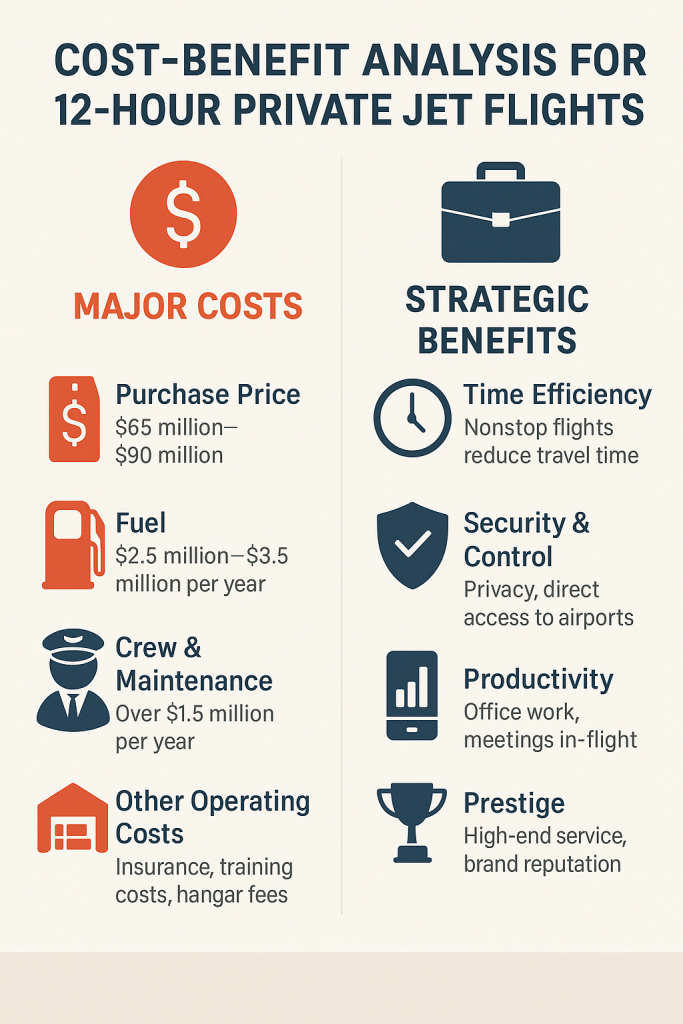
Operational and Regulatory Considerations
Operating a private jet capable of flying for 12 hours is not simply a matter of fuel capacity and engineering—it involves adherence to international aviation regulations, crew duty laws, and airspace compliance requirements. For operators, charter brokers, and owners alike, understanding these constraints is critical for both safety and strategic planning.
Crew Duty Limits and Augmentation
Under most civil aviation authorities (FAA, EASA, DGCA, etc.), crew duty time is strictly regulated to prevent fatigue on extended missions:
- Standard crew (2 pilots) may face limitations on total duty hours, often capping flights at 10–12 hours without rest.
- For true 12+ hour operations, aircraft typically require augmented crews (3 or more pilots), ensuring one can rest while others maintain active control.
- Ultra-long-range jets are often equipped with dedicated crew rest areas to comply with fatigue management protocols.
Operators must plan for:
- Pilot rotation schedules
- Duty time resets between legs
- Crew accommodation logistics at destination
ETOPS and Extended Overwater Operations
Most 12-hour routes cross large oceanic or remote territories, triggering ETOPS (Extended-range Twin-engine Operational Performance Standards) or equivalent regulations:
- ETOPS certification ensures aircraft can safely divert to alternate airports in case of engine failure.
- Jets like the Gulfstream G700, Global 7500, and Falcon 10X comply with ETOPS-180+ or are tri-engine/long-range certified for transoceanic navigation.
Additionally, ICAO flight planning, emergency fuel reserves, and en-route alternates must be documented for regulatory approval.
Slot Access, Permits, and Diplomatic Clearance
Operating long-range private flights into or out of high-security or congested zones involves:
- Landing permits (country-specific): Some jurisdictions (e.g., China, Russia, India) require pre-approved permits, often with 48–72 hour notice.
- Slot allocations: Major airports like London Heathrow, Singapore Changi, and JFK require precise arrival slots.
- Diplomatic clearances: For state-owned aircraft or VIP delegations, diplomatic permissions may take longer to obtain.
Failure to coordinate these details can lead to delays, penalties, or denied landing rights.
Ground Handling and Refueling Contingency
For flights stretching the operational envelope of 12–15 hours:
- Fuel reserves must accommodate rerouting, weather, and holding patterns.
- Diversion airports must be pre-planned with handling agreements in place.
- Ground teams at both origin and destination must be experienced with wide-body or ultra-long-range jet handling.
Future Outlook: Innovation in Long-Haul Private Jet Capabilities
As global mobility demands continue to evolve, the future of 12-hour capable private jets will be shaped by advancements in sustainability, performance, digital connectivity, and passenger experience. Manufacturers are already shifting focus from incremental performance upgrades to transformational technologies that redefine the private aviation landscape.
Sustainable Aviation Fuel (SAF) and Emissions Compliance
The drive toward net-zero aviation is intensifying:
- Sustainable Aviation Fuel (SAF) adoption is accelerating among OEMs and operators. Gulfstream and Bombardier have successfully completed transcontinental test flights powered entirely by SAF.
- Private aviation leaders like NetJets, VistaJet, and Flexjet have committed to achieving carbon-neutral operations through SAF blending, carbon offsetting, and emissions reporting tools.
- Regulatory pressures from the EU, California, and ICAO are pushing operators to disclose flight emissions and adopt greener fuel sources for long-haul flights.
By 2030, it’s expected that a significant portion of 12+ hour missions will rely on SAF, supported by tax incentives and mandatory blending quotas.
Supersonic and Hypersonic Aircraft Development
Aircraft that once seemed theoretical are now moving into prototype and testing phases:
- Boom Supersonic (Overture) targets Mach 1.7 and aims to cut 12-hour flights in half, with a planned 2029 launch. Though limited in capacity, it presents a radical evolution in executive travel speed.
- Spike Aerospace and NASA/Lockheed Martin X-59 are also developing quiet supersonic technology to reintroduce faster-than-sound business travel without sonic boom disruption.
While these innovations may not replace long-range subsonic jets initially, they will offer elite clients new time-saving choices for transoceanic travel.
In-Flight Cabin Innovation and AI Integration
Future ultra-long-range jets will offer more than distance—they will deliver adaptive comfort and digital ecosystems:
- AI-driven cabin environments: Climate, lighting, and seating automatically adjust to passenger health, circadian rhythm, and activity.
- Next-gen inflight connectivity: Ku/Ka band satellite tech (Starlink, OneWeb) ensures uninterrupted, high-speed broadband for meetings, file transfer, and remote operations.
- Modular cabin zones: Configurations for work, rest, and dining will be customizable, appealing to both corporate and high-luxury markets.
These innovations cater to a new generation of clients who value flexibility, sustainability, and immersive connectivity as much as speed or comfort.
Conclusion and Strategic Recommendations
The question “Can a private jet fly for 12 hours?” is no longer theoretical—it is a measurable, proven capability that continues to evolve alongside technology, business demands, and geopolitical complexity. Today’s ultra-long-range private jets are not just engineering feats; they are strategic instruments of time optimization, global access, and executive control.
For organizations and individuals considering long-haul private jet investment or usage, the decision must balance capital expenditure with mission value. While costs can exceed $10,000–$14,000 per flight hour, the benefits in time saved, deal velocity, brand credibility, and risk mitigation often outweigh financial inputs—especially for enterprises operating across multiple regions.
Strategic Recommendations:
- Assess Your Travel Profile: If your operations demand more than 200 hours of annual intercontinental flight time, ownership or fractional models may deliver cost efficiency and control.
- Prioritize Resale and Residual Value: Aircraft such as the Gulfstream G700 and Global 7500 retain value well due to high market demand for 12+ hour capabilities. Looking to compare top-tier models? Here’s a guide to the best private jets available.
- Monitor Emerging Technologies: Supersonic and AI-driven innovations are not far off. Early adopters may benefit from competitive advantage and media visibility.
- Integrate Sustainability into Strategy: Use of SAF, carbon offsetting, and emissions reporting are not optional—they are becoming prerequisites for global clients and regulators.
- Work with Specialized Advisors: Legal, operational, and financial advisors with aviation expertise can help navigate permitting, taxation, and international regulations tied to long-range operations.
In the realm of global mobility, 12-hour private jet capability is a strategic differentiator—not a luxury. Those who recognize its role in time-critical decision-making, market entry, and executive agility will be better positioned to lead in a fast-moving, borderless business environment.
